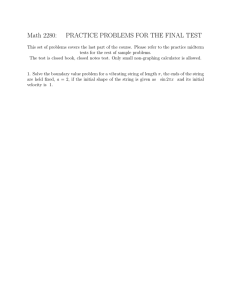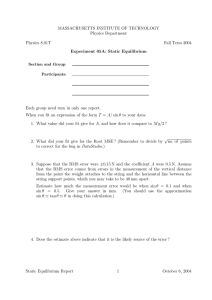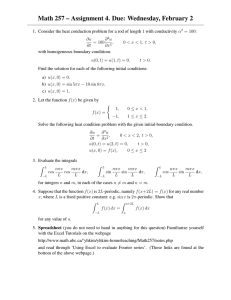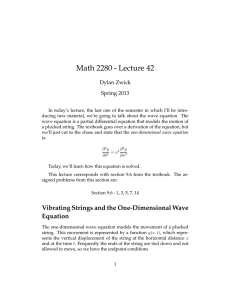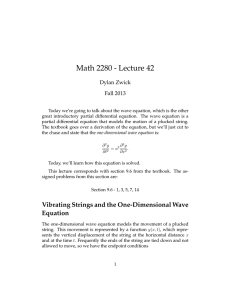Normal Modes and Fourier Series
advertisement
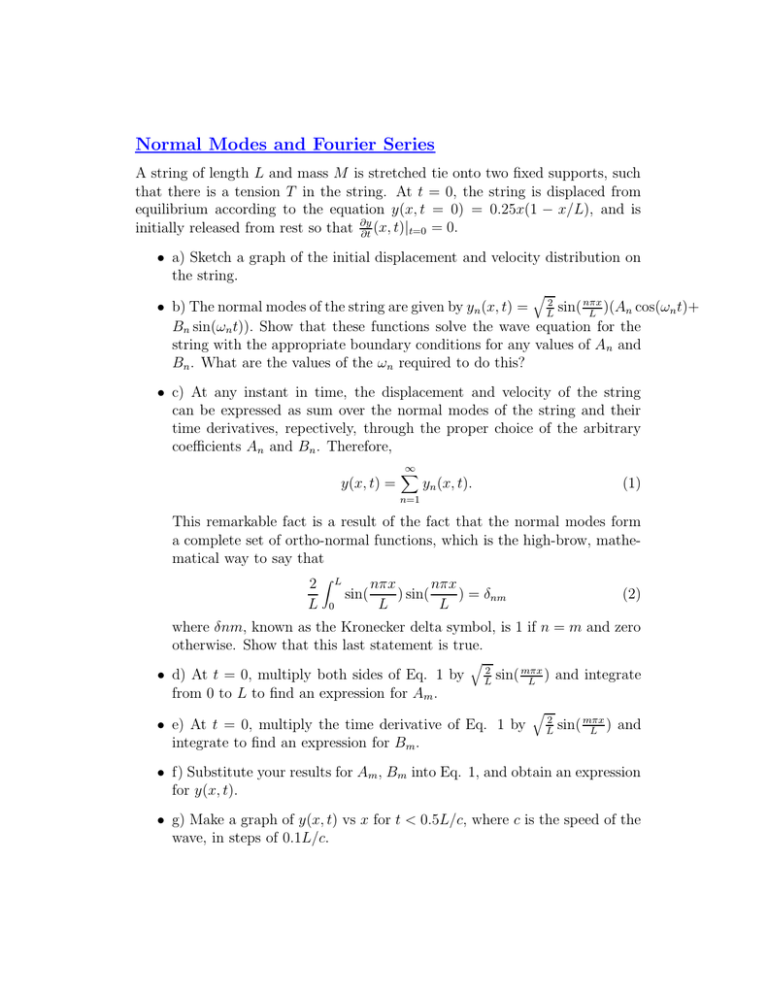
Normal Modes and Fourier Series A string of length L and mass M is stretched tie onto two fixed supports, such that there is a tension T in the string. At t = 0, the string is displaced from equilibrium according to the equation y(x, t = 0) = 0.25x(1 − x/L), and is (x, t)|t=0 = 0. initially released from rest so that ∂y ∂t • a) Sketch a graph of the initial displacement and velocity distribution on the string. q )(An cos(ωn t)+ • b) The normal modes of the string are given by yn (x, t) = L2 sin( nπx L Bn sin(ωn t)). Show that these functions solve the wave equation for the string with the appropriate boundary conditions for any values of An and Bn . What are the values of the ωn required to do this? • c) At any instant in time, the displacement and velocity of the string can be expressed as sum over the normal modes of the string and their time derivatives, repectively, through the proper choice of the arbitrary coefficients An and Bn . Therefore, y(x, t) = ∞ X yn (x, t). (1) n=1 This remarkable fact is a result of the fact that the normal modes form a complete set of ortho-normal functions, which is the high-brow, mathematical way to say that 2ZL nπx nπx ) sin( ) = δnm sin( L 0 L L (2) where δnm, known as the Kronecker delta symbol, is 1 if n = m and zero otherwise. Show that this last statement is true. • d) At t = 0, multiply both sides of Eq. 1 by from 0 to L to find an expression for Am . q 2 L sin( mπx ) and integrate L • e) At t = 0, multiply the time derivative of Eq. 1 by integrate to find an expression for Bm . q 2 L sin( mπx ) and L • f) Substitute your results for Am , Bm into Eq. 1, and obtain an expression for y(x, t). • g) Make a graph of y(x, t) vs x for t < 0.5L/c, where c is the speed of the wave, in steps of 0.1L/c.

